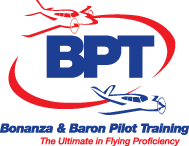1. In relation to operating expenses and compensation while you are acting as pilot in command, the regulations specify that as a private pilot you may:
A. Not share the operating expenses with passengers
B. Share the operating expenses with passengers
C. Share the operating expenses with passengers and receive compensation from them for pilot services
D. Share operating expenses plus be compensated for the time involved if the pilot meets the flight-‐time requirements for a commercial pilot certificate
2. If the aircraft transponder fails during flight within Class B airspace:
A. The pilot should immediately request clearance to depart the Class B airspace.
B. ATC may authorize deviation from the transponder requirement to allow aircraft to continue to the airport of ultimate destination.
C. The aircraft must immediately descend below 1,200 feet AGL and proceed to destination.
3. As a rule of thumb, altitude corrections of less than 100 feet should be corrected by using a:
A. Two-bar width on the attitude indicator
B. Half-bar width on the attitude indicator
C. Full-bar width on the attitude indicator
D. Corrections of less than 100 feet are not recommended
4. During normal coordinated turns, what error due to precession should you observe when rolling out to straight and level flight from a 180° steep turn to the right?
A. The miniature aircraft would show a slight descent and wings level attitude
B. A straight and level coordinated flight indication
C. The miniature aircraft would show a slight turn indication to the right
D. The miniature aircraft would show a slight climb and turn to the left
5. To level off at an airspeed higher than the descent speed, the addition of power should be made, assuming a 500 FPM rate of descent, at approximately:
A. 50 to 100 feet above the desired altitude
B. 100 to 150 feet above the desired altitude
C. 150 to 200 feet above the desired altitude
D. 125 to 175 feet above the desired altitude
6. Please refer to the excerpt from a Winds Aloft & Temperature Forecast below:
FT 6000 FT 9000
0737-04 1043-10
The standard temperature at sea level is 15°C, and there is an average temperature change (standard lapse rate) of 2°C per 1000 feet of altitude.
What can you determine about the forecast temperature for your flight at
9000 MSL and your aircraft performance (speed):
A. 7° colder than standard, and aircraft performance would increase
B. 1°C colder than standard, and aircraft performance would be unchanged
C. 3°C warmer than standard, and aircraft performance would decrease
D. Standard — and aircraft performance would increase.
Answers: 1. B; 2.B; 3. B; 4. D; 5. B; 6 A




